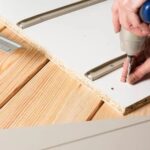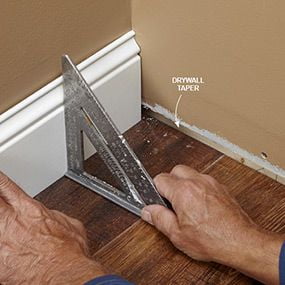What is the best respirator for woodworking? The importance of respiratory protection in woodworking cannot be overstated, as exposure to wood dust can have serious health implications. In this article, we will explore the different types of respirators available for woodworking and discuss the key features to look for when choosing the best one. We will also provide a curated list of recommended respirators and offer tips for proper maintenance to ensure longevity and effectiveness.
Woodworking involves the cutting, sanding, and shaping of wood, which can release fine particles and dust into the air. Inhaling these particles over time can lead to respiratory issues such as asthma, allergies, and even more serious conditions like lung disease. It is essential for woodworkers to prioritize their respiratory health by using appropriate protective equipment, with the best respirator being a crucial component.
Whether you are a professional woodworker or a hobbyist, understanding the importance of respiratory protection is key to maintaining a safe working environment. By choosing the right respirator for woodworking, you can effectively safeguard your health while pursuing your passion for working with wood. Keep reading to learn more about how to select the best respirator for your woodworking needs.
Types of Respirators
In the market for woodworking respirators, there are several types to choose from, each with its own set of advantages and disadvantages. It’s important to understand the different options available so that you can make an informed decision about which type of respirator is best suited for your specific woodworking needs.
Disposable Respirators
Disposable respirators are often a popular choice for occasional woodworking tasks or for those who prefer the convenience of not having to clean and maintain a reusable respirator. These respirators are typically lightweight and cost-effective, making them a practical option for many woodworkers. However, it’s important to note that disposable respirators may not provide the same level of protection as their reusable counterparts.
Half-Face Respirators
Half-face respirators cover the nose and mouth and are designed to protect against particles, dust, and other airborne contaminants. They are equipped with replaceable filters that can be changed as needed, making them a cost-effective option for regular woodworking use. Additionally, some half-face respirators allow for the attachment of additional filters or cartridges to provide protection against specific hazards such as organic vapors or chemical fumes.
Full-Face Respirators
For woodworkers who require full coverage and protection for their eyes as well as their respiratory system, full-face respirators are an excellent choice. These respirators provide complete facial protection and are equipped with built-in eye shields or goggles to safeguard against flying debris, sawdust, and other potential hazards in woodworking environments. While full-face respirators offer comprehensive protection, they can be bulkier and less comfortable than smaller options.
Understanding the benefits and drawbacks of each type of woodworking respirator is crucial in determining which option will best suit your needs. By considering factors such as comfort, level of protection required, maintenance requirements, and cost considerations, you can make an educated decision when selecting the best respirator for woodworking.
Key Features to Look for in a Woodworking Respirator
When it comes to woodworking, choosing the right respirator is crucial for protecting your lungs from harmful dust, fumes, and particles. With so many options available on the market, it’s important to understand the key features to look for in a woodworking respirator to ensure that you are getting the best protection possible. Here are some important factors to consider when choosing the best respirator for woodworking:
- Filtration Efficiency: Look for a respirator with high-quality filters that can effectively capture wood dust, sawdust, and other airborne particles commonly found in woodworking environments.
- Comfort and Fit: A proper seal is essential for a respirator to be effective. Look for adjustable straps, a comfortable nose piece, and a lightweight design to ensure a snug and secure fit without sacrificing comfort.
- Compatibility with Safety Gear: Consider whether the respirator can be comfortably worn with other safety gear such as goggles or earmuffs. Integration with other protective equipment is important for overall safety in woodworking environments.
- Exhalation Valve: An exhalation valve can help reduce heat build-up inside the respirator and make breathing more comfortable during extended periods of use.
Ultimately, the best respirator for woodworking will provide a combination of effective filtration, comfort, and compatibility with other safety gear. By considering these key features, you can make an informed decision when selecting the right respirator for your woodworking needs. Next up we will explore some of the top recommended respirators on the market that meet these important criteria.
Top Recommended Respirators for Woodworking
When it comes to woodworking, respiratory protection is a top priority for ensuring the safety and health of workers. With the potential for wood dust, fumes, and other airborne particles to cause harm, choosing the right respirator is crucial. But with so many options available on the market, it can be challenging to determine which respirator is the best for woodworking.
One highly recommended option for woodworking respirators is the 3M Rugged Comfort Quick Latch Half Facepiece Reusable Respirator. This respirator is known for its comfort and ease of use, featuring a quick latch mechanism for easy on and off capability. It also offers effective respiratory protection with its integrated filters that capture harmful particles.
Another top contender in the realm of woodworking respirators is the GVS SPR457 Elipse P100 Half Mask Respirator. This lightweight and compact respirator provides a high level of protection against dust particles, making it an ideal choice for woodworking environments. Its ergonomic design ensures a secure and comfortable fit for long hours of wear.
For those in search of a full-face respirator option, the 3M Full Facepiece Reusable Respirator 6800 may be the best choice for woodworking. With its large clear lens and dual cartridge system, this respirator provides comprehensive respiratory protection while offering a wide field of vision for precision work. Comfortable to wear and easy to maintain, this respirator is a reliable option for woodworking safety.
It’s important to consider factors such as comfort, fit, filtration efficiency, and maintenance requirements when selecting the best respirator for woodworking purposes. By investing in a high-quality respirator that meets safety standards and fits properly, woodworkers can effectively protect their respiratory health while on the job.
Tips for Proper Respirator Maintenance
Proper maintenance of your respirator is essential in ensuring its longevity and effectiveness in protecting you from harmful wood dust and other particles while woodworking. Neglecting the maintenance of your respirator can lead to compromised performance, putting your respiratory health at risk. In this section, we will discuss some important tips for maintaining your woodworking respirator.
First and foremost, it is crucial to regularly clean your respirator after each use. Many respirators are equipped with removable filters and cartridges that need to be replaced or cleaned according to the manufacturer’s instructions. Failure to clean these components can result in clogging, reducing the efficiency of the respirator in filtering out harmful particles. Additionally, cleaning the straps and facepiece of the respirator will help maintain a proper seal for maximum protection.
In addition to regular cleaning, it is important to inspect your respirator for any signs of wear or damage. Look for cracks, tears, or distortion in the facepiece, as well as any broken or worn-out components. It is recommended to follow the manufacturer’s guidelines on when to replace certain parts of the respirator, such as filters, cartridges, valves, and gaskets.
By keeping a close eye on the condition of your respirator, you can ensure that it remains in optimal working condition. Always refer to the user manual provided by the manufacturer for specific maintenance instructions tailored to your model of respirator.
By following these tips for proper respirator maintenance, you can prolong the life of your woodworking respirator and maintain its effectiveness in safeguarding your respiratory health. Taking care of your respirator not only ensures its longevity but also guarantees that it continues to provide you with the protection you need while working with wood. Remember to invest time and effort into maintaining your respirator as an integral part of your overall safety practices in woodworking.
Conclusion
In conclusion, the importance of choosing the right respirator for woodworking safety cannot be overstated. Woodworking activities expose individuals to various hazardous particles and gases, making respiratory protection a critical aspect of safety in this field. With the wide range of options available on the market, it is essential to consider factors such as filtration efficiency, comfort, fit, and ease of maintenance when selecting the best respirator for woodworking.
After exploring the different types of respirators suitable for woodworking and understanding the key features to look for in a woodworking respirator, it becomes evident that there is no one-size-fits-all solution. The best respirator for woodworking will ultimately depend on individual preferences, specific woodworking tasks, and environmental factors. However, regardless of the choice made, proper maintenance is crucial to ensure longevity and effectiveness.
To ensure maximum protection and minimize health risks associated with woodworking activities, it is imperative to conduct thorough research and seek professional advice if necessary when deciding what is the best respirator for woodworking. By prioritizing respiratory protection and investing in a high-quality respirator that meets all relevant safety standards, woodworkers can continue pursuing their craft with peace of mind.
Frequently Asked Questions
Is P100 Better Than N95 for Woodworking?
P100 respirators are generally considered better than N95 masks for woodworking due to their higher filtration efficiency. They can filter out almost 100% of particles, including wood dust and other airborne particles.
What Type of Mask Should You Wear for Woodworking?
When woodworking, it is important to wear a mask with a high filtration capacity such as a P100 or N95 respirator. These masks are able to filter out fine wood dust particles which can be harmful if inhaled.
What Respirator Is Best for Wood Turning?
For wood turning, it is recommended to use a respirator that has a P100 rating or higher. This type of respirator provides the highest level of protection against fine wood dust and other airborne particles that are commonly produced during wood turning activities.

Hi everyone! I’m a woodworker and blogger, and this is my woodworking blog. In my blog, I share tips and tricks for woodworkers of all skill levels, as well as project ideas that you can try yourself.





